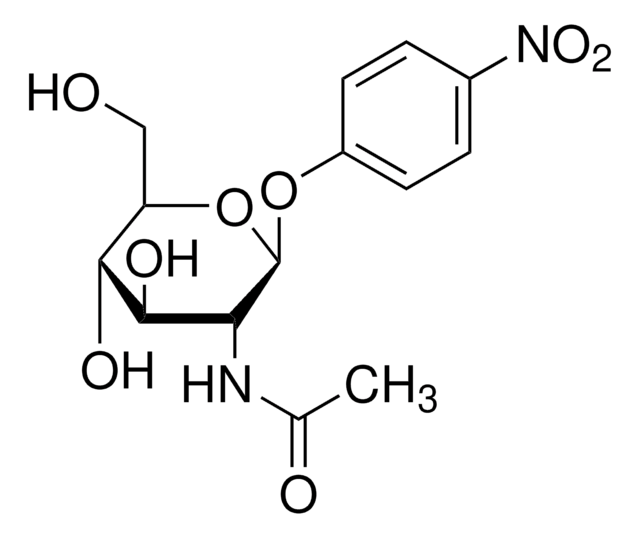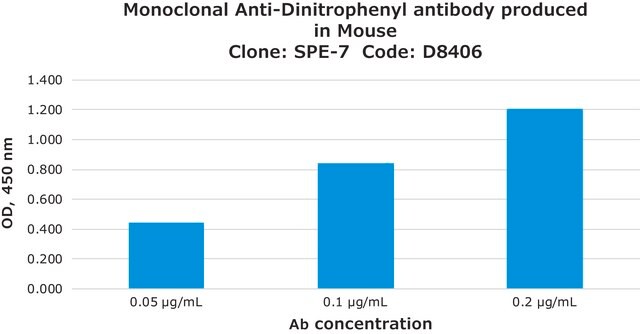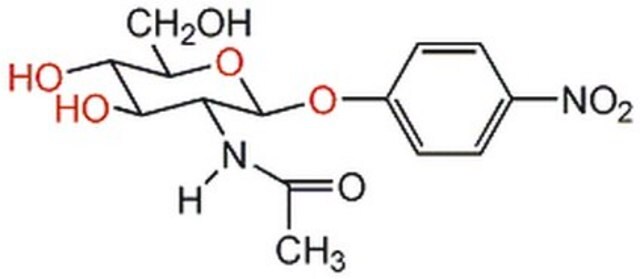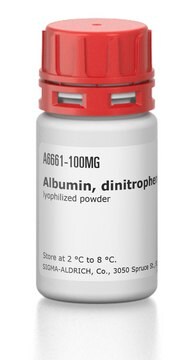IMM001
Mast Cell Degranulation Assay Kit
The Mast Cell Degranulation Assay Kit provides a quick, efficient & sensitive system for evaluation of tryptase activity in culture supernatants, cell lysates or other tryptase-containing samples.
Synonym(s):
Live mast cell tryptase assay
About This Item
Recommended Products
manufacturer/tradename
Chemicon®
technique(s)
activity assay: suitable
cell based assay: suitable
shipped in
dry ice
General description
Degranulation, the secretion of cytoplasmic granules, is a key step in the inflammatory response of leukocytes (e.g. basophils, neutrophils, eosinophils, and mast cells). In addition to histamine, these secretory granules contain many proinflammatory mediators including heparin, cytokines, chemokines, and many proteases (Hallgren, 2001). Tryptase, a tetrameric serine proteinase, has emerged as the major component of mast cell granules, comprising up to 20% of the total protein of mast cells derived from lung, colon and skin tissue (He, 2004; He, 1998; Schwartz, 1986). Because it is stored almost exclusively in mast cells, tryptase is a popular indicator of mast cell activation and a target for therapeutic intervention in allergic diseases. The Chemicon Mast Cell Degranulation Assay Kit provides a quick, efficient and sensitive system for evaluation of tryptase activity in cell lysates, supernatants or for inhibitor screening.
Test Principle
Chemicon′s Mast Cell Degranulation Assay Kit provides a simple and convenient means for assaying tryptase activity. The assay is based on spectophotometric detection of the chromophore p-nitroaniline (pNA) after cleavage from the labeled substrate tosyl-gly-pro-lys-pNA. The free pNA can then be quantified using a spectrophotometer or a microtiter plate reader at 405 nm. A pNA Standard is provided as a comparison control.
Calcium Ionophore A23187 (Calcimycin) is included in the kit for degranulation induction of samples. Calcimycin has been a well-documented inducer of tryptase release from human mast cells (2,3).
A tryptase inhibitor, protamine, is included as a test inhibitor for screening purposes. Protamine is a potent heparin antagonist that competitively binds heparin, an essential stabilizing factor of mast cell tryptase (Hallgren, 2001; Schwartz, 1986). Protamine has been shown to inhibit both human and mouse tryptase (Hallgren, 2001). The kit′s Assay Buffer contains heparin for tryptase stabilization.
Application
The Chemicon Mast Cell Degranulation Assay Kit is intended for research use only, and not for diagnostic or therapeutic applications.
Components
5X Assay Buffer (Part No. 2003649): 20 mL containing 0.1% heparin.
Calcium Ionophore A23187 (Part No. 2003652): 100 μL of 1 mM in DMSO.
Tryptase Inhibitor (Protamine) (Part No. 2003651): 250 μL of 10 mM solution.
Tryptase Substrate (tosyl-gly-pro-lys-pNA) (Part No. 90569): 3.125 mg.
pNA Standard (Part No. 90085): 250 μL of 10 mM in DMSO.
Storage and Stability
Storage of Reagents
1. Tryptase Positive Control: Thaw vial at 2-8°C. Aliquot and store at -20°C up to the vial′s expiration date. Avoid multiple freeze/thaw cycles.
2. 5X Assay Buffer: Dilute the 5X Assay Buffer with deionized water. Stir to homogeneity and store at 2-8°C up to its expiration date.
3. Calcium Ionophore A23187: Thaw vial at 2-8°C. Aliquot and store at -20°C up to the vial′s expiration date. Avoid multiple freeze/thaw cycles.
4. Tryptase Inhibitor: Thaw vial at 2-8°C. Aliquot and store at -20°C up to the vial′s expiration date. Avoid multiple freeze/thaw cycles.
5. Tryptase Substrate: Reconstitute with 2 mL of 1X Assay Buffer (2.5 mM stock solution). Aliquot and store at -20°C up to 3 months. Avoid multiple freeze/thaw cycles.
6. pNA Standard: Thaw vial at 2-8°C. Aliquot and store at -20°C up to the vial′s expiration date. Avoid multiple freeze/thaw cycles.
Note: Positive Control, Substrate, pNA Standard, and Calcium Ionophore are light sensitive; amber vials or equivalent should be used. Keep materials away from light as much as possible and during storage.
Legal Information
Disclaimer
Storage Class Code
10 - Combustible liquids
Regulatory Listings
Regulatory Listings are mainly provided for chemical products. Only limited information can be provided here for non-chemical products. No entry means none of the components are listed. It is the user’s obligation to ensure the safe and legal use of the product.
PDSCL
Please refer to KIT Component information
PRTR
Please refer to KIT Component information
FSL
Please refer to KIT Component information
ISHL Indicated Name
Please refer to KIT Component information
ISHL Notified Names
Please refer to KIT Component information
Cartagena Act
Please refer to KIT Component information
JAN Code
キットコンポーネントの情報を参照してください
Certificates of Analysis (COA)
Search for Certificates of Analysis (COA) by entering the products Lot/Batch Number. Lot and Batch Numbers can be found on a product’s label following the words ‘Lot’ or ‘Batch’.
Already Own This Product?
Find documentation for the products that you have recently purchased in the Document Library.
Our team of scientists has experience in all areas of research including Life Science, Material Science, Chemical Synthesis, Chromatography, Analytical and many others.
Contact Technical Service








